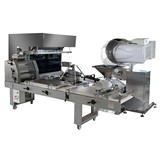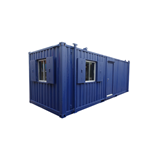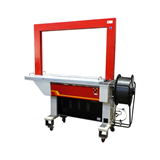Key takeaways
- Growth readiness: Strong, consistent revenue and profit trends, stable cash flow, and repeat customers often signal that your operation is ready to expand.
- Operational efficiency: Low downtime, effective processes, and reliable supply chains are key indicators that scaling is feasible.
- Market demand insights: Increasing customer enquiries, waitlists, or sales growth in target regions suggest expansion opportunities.
- Financial and compliance preparedness: Access to finance, understanding of regulatory obligations, and workforce planning are critical before scaling.
- KPIs to monitor before expansion: Track measurable indicators like revenue growth, cash flow, operational efficiency, and staff capacity to objectively assess readiness.
- Checklist for pre-expansion assessment: Use a practical step-by-step checklist covering finance, market demand, operations, workforce, compliance, and risk to guide your decision.
- Funding and financing options: Understand Australian-specific financing choices, project ROI, and plan for sustainable capital allocation before committing to expansion.
- Staffing and organisational scaling strategies: Prepare your workforce through role redesign, training, recruitment, and maintaining culture to support scalable, high-quality operations.
- Strategic timing: Expansion is most effective when your business has both the operational capacity and market conditions in its favour.
Introduction
Expanding your business is a significant decision, and getting the timing right can make the difference between sustainable growth and operational strain. Across Australia, businesses face unique challenges, from navigating local regulatory requirements to managing supply chain logistics across vast distances. Whether you’re running a manufacturing facility in Victoria, a regional service business in Queensland, or a retail outlet in Sydney, recognising the right signs that indicate growth readiness is essential. This guide will help you read those signs, prepare for expansion, and make informed decisions that set your operation up for long-term success.
Understanding the signs your business is ready to expand
Consistent revenue and profitability
- Track your revenue growth over the past 12–24 months. Steady or rising sales, coupled with strong profit margins, indicate capacity to invest in new locations, equipment, or staff.
- Look for recurring revenue streams, e.g., repeat orders, subscription services, or long-term contracts. They reduce the risk associated with scaling.
- Australian example: A Melbourne-based boutique bakery saw a 20% year-on-year revenue increase for three consecutive years before opening a second outlet, ensuring their new location had a built-in customer base.
Operational efficiency and capacity
- Evaluate your workflow: low downtime, reliable supply chains, and effective staff training show your business can handle increased volume.
- Assess bottlenecks: can your production, delivery, or service processes scale without compromising quality?
- Use key performance indicators (KPIs) like order fulfilment times, machine utilisation rates, or service response times to measure readiness.
Market demand and opportunity
- Monitor customer enquiries, website traffic, or waitlists for products or services. An upward trend signals latent demand in your current location or other regions.
- Conduct competitive analysis: are there underserved markets or gaps your business can fill?
- Australian scenario: A Brisbane-based landscaping company noticed repeated enquiries from nearby suburbs; research confirmed low local competition, prompting expansion with minimal marketing risk.
Financial preparedness for expansion
Evaluating cash flow and funding options
- Expansion often requires capital for new premises, equipment, marketing, and additional staff. Ensure you have:
- Healthy cash reserves
- Positive cash flow trends
- Access to finance (bank loans, equipment finance, or government grants)
- Consider leasing vs buying equipment to reduce upfront costs.
Understanding costs and ROI
- Prepare detailed financial projections: include staffing, rent, utilities, inventory, marketing, and regulatory compliance costs.
- Estimate payback period and return on investment (ROI) for the expansion project.
Australian resource: The Australian Small Business and Family Enterprise Ombudsman provides guides on business finance and expansion strategies tailored to SMEs.
Compliance and regulatory considerations
- Check local zoning, licensing, and regulatory requirements in new locations.
- Ensure workplace health and safety (WHS) standards are scalable across multiple sites.
- Understand tax implications, payroll obligations, and industrial relations requirements.
- Case example: A Perth café expanding to a second site ensured compliance with local council regulations and food safety licensing, avoiding costly fines and operational delays.
Workforce planning and organisational readiness
- Assess staffing needs: can current employees take on leadership roles in new operations?
- Plan recruitment and training to maintain service quality and company culture.
- Consider organisational structure changes: decentralised vs centralised management for multi-site operations.
Reading the market signals
- Customer behaviour trends: Rising enquiries, waitlists, or pre-orders can indicate readiness.
- Industry growth indicators: Government reports, industry associations (e.g., Australian Industry Group) provide sector-specific growth data.
- Competitive landscape: if competitors are expanding or exiting markets, there may be opportunities or risks to consider.
Timing your expansion
- Expansion is rarely ideal during economic downturns or periods of supply chain instability.
- Look for seasonal or cyclical patterns in your industry to maximise ROI.
- Consider soft-launch strategies: pilot operations, pop-up stores, or limited-service offerings before full-scale rollout.
Risk management and contingency planning
- Identify operational, financial, and market risks: supply chain disruption, staffing shortages, or regulatory changes.
- Develop contingency plans: alternative suppliers, flexible staffing, and emergency budgets.
- Example: An Adelaide-based brewery opened a small satellite taproom first, allowing them to test demand without committing to a full-scale brewery expansion.
Technology and systems support
- Ensure IT systems (POS, inventory, ERP, CRM) can handle multiple locations.
- Implement data analytics to monitor KPIs, sales trends, and workforce performance in real-time.
- Consider cloud-based systems for flexibility and remote management.
Key performance indicators (KPIs) to monitor before expansion
Before you commit to expansion, it’s crucial to have objective measures that signal your business is ready. Monitoring the right KPIs gives you a clear picture of operational and financial health. Key indicators to track include:
- Revenue growth: Consistent upward trends over 12–24 months indicate strong market demand.
- Profit margins: Healthy margins show you can absorb expansion costs without compromising sustainability.
- Cash flow stability: Positive cash flow ensures you can cover new investments in staff, premises, or equipment.
- Customer retention: High repeat business or subscription renewals demonstrate a loyal customer base.
- Operational efficiency: Low downtime, high productivity, and reliable supply chains signal your processes can scale.
- Staff utilisation and capacity: Monitoring overtime, workload, and absenteeism helps identify whether your workforce can handle increased volume.
Example: A Melbourne-based printing company tracked order fulfilment times and staff capacity before opening a second facility. By analysing these KPIs, they avoided overextending resources and ensured the new location operated smoothly from day one.
Checklist for pre-expansion assessment
A concise, step-by-step checklist allows you to self-assess readiness and make informed decisions. Use this as a practical guide before committing to expansion:
- Financial health: Profitable operations and positive cash flow.
- Market demand: Growing enquiries, repeat customers, or pre-orders.
- Operational efficiency: Scalable processes and minimal bottlenecks.
- Workforce readiness: Trained staff capable of supporting new locations.
- Compliance preparedness: Licences, WHS requirements, and local regulations covered.
- Technology infrastructure: Systems can handle multiple locations (POS, ERP, CRM).
- Risk mitigation plan: Contingency strategies for supply chain, staffing, or market fluctuations.
By ticking off this checklist, you’ll have a practical framework to decide whether now is the right time to expand.
Funding and financing options
Even the most operationally ready business can stumble if expansion isn’t properly funded. Understanding your financing options in the Australian context is essential:
- Bank loans: Traditional business loans remain a common choice for SMEs. Compare interest rates, repayment terms, and security requirements.
- Government-backed SME loans or grants: Programs like the Australian Government’s Small Business Grants Hub can offset expansion costs.
- Equipment or vehicle financing: Leasing or financing reduces upfront capital requirements for machinery, vehicles, or tech upgrades.
- Private investment or equity: Bringing in investors can inject capital while sharing risk, but may dilute ownership.
Tip: Always create detailed financial projections, including staffing, rent, inventory, and compliance costs. Estimate your ROI and payback period to ensure expansion is financially sustainable.
Staffing and organisational scaling strategies
Your team is the backbone of any successful expansion. Without careful workforce planning, growth can quickly falter. Consider the following strategies:
- Role redesign and delegation: Identify staff ready for leadership positions in new locations, and redistribute responsibilities effectively.
- Recruitment planning: Map staffing needs for each new site and begin hiring early to avoid operational gaps.
- Training and upskilling: Standardise training programs to maintain service quality and operational consistency across locations.
- Culture and communication: Maintain company values and communication standards to ensure alignment between multiple teams.
- Flexible organisational structure: Decide between centralised vs decentralised management based on your business model and expansion goals.
Example: A Sydney-based café chain rolling out a second location created a “lead barista” role, training them to manage operations independently while reporting back to head office. This approach maintained service quality and employee satisfaction during rapid growth.
Real-world case study: scaling successfully in Australia
- Scenario: A Sydney-based health and wellness studio expanded to three suburbs within two years.
- Key steps: tracked membership growth, implemented standardised training, leveraged finance for equipment and leasehold improvements, consulted local councils for permits.
- Outcome: increased revenue 3x without diluting service quality, maintained client satisfaction above 90%, and created new regional brand recognition.
Summary: How to know when to expand
- Financial stability: consistent profits and positive cash flow.
- Operational readiness: efficient workflows, scalable processes, and trained staff.
- Market opportunity: clear demand, competitive advantage, and growth potential.
- Compliance preparedness: understanding regulatory requirements and obligations.
- Strategic timing: aligning expansion with favourable market conditions and internal capacity.
By carefully monitoring these indicators, you can expand your operation in Australia with confidence, minimise risk, and maximise sustainable growth. Expansion isn’t just about ambition, it’s about timing, preparation, and strategic execution.










-160x160-state_article-rel-cat.png)

-160x160-state_article-rel-cat.png)
















-160x160-state_article-rel-cat.png)